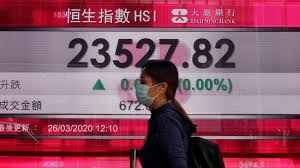Interview with Senior Wall Street Fund Manager (2)

Two quarters later, starting in 4Q16, the machine finally realized that due to the lack of Athleisure product, Under Armour sales numbers were starting to deteriorate and growth was plummeting to single digits, and started rushing in to short, allowing me to successfully front run the machine and capture huge alpha.
Having discussed what opportunities I don't touch (but have the potential to become advantageous) using the Under Armour example, let's take a closer look at what types of opportunities I focus on capturing (i.e., what the "machine can't eat").
Type 1: No data to feed the machine (information arbitrage)
Typical scenario.
- Company transitions (Adobe from selling software to going to the cloud to sell SAAS Subscription, Shopify from asset light to asset heavy).
- A change in management or incentives leading to a change in strategy (sale of non-core operations after a change in leadership at GE, change in leadership at BHC from an expansion to a contraction policy).
- The impact of disruptive long-term trends on the business (JetBrains did not anticipate the impact of bike-sharing on the business, supra Under Armour).
In these scenarios, there is significant change at the company's business level, but the inflection point of change takes several quarters to be fully reflected in the data. In the intervening window, without sufficient data to feed the machine, the machine cannot seize the opportunity, whereas we can Easy to ambush them first, wait for the data to start reacting to the change inflection point, and let the machine carry the litter.
Category 2: The machine is unable to determine the long-term impact of short-term data (time arbitrage)
Typical scenario.
- Machine overestimates the long-term impact of short-term data (Machine overestimates the business impact of the trade war on Haikang, Dahua; overestimates the impact of the Apple-Qualcomm lawsuit on Qualcomm's 5G business).
- machines underestimate the long-term impact of short-term data (machines underestimate the growth potential of Amazon's cloud business, Paypal's acquisition of Venmo's consumer business).
In these scenarios, short-term data does not give the machine enough contextual information, leading the machine to over-rely on short-term data resulting in miscalculations that either overestimate the company's short-term setbacks or underestimate the company's long-term growth potential.
Category 3: The machine lacks the imagination to connect the dots (cross-sectional arbitrage)
Typical scenario: machines are unable to quickly capture arbitrage opportunities across regions, across markets (global direct sales market, global cosmetics market).
In these scenarios, the machine lacks the imagination to connect the dots and does not understand that different regions, different Companies in the market may have a common driver (underlying driver). This results in a machine that cannot react quickly enough to capture arbitrage opportunities across regions and markets.
Talking about specific projects: the only way to drink from a weak pool of water
1: You're involved in many projects, talk about the one that excites or impresses you the most? Why?
As I said when I introduced my investment philosophy, I focus on opportunities that machines can't capture, such as when a company undergoes a significant change at the business level, but it takes several quarters for the inflection point to be fully reflected in the data.
Let's use Hello Fresh (HFG) as a case study: HFG is a meal-kit company. Simply put, it's a way for customers to order net food to cook their own food at home.HFG's main competitor in the U.S. is a unicorn company called Blue Apron, doing the same business, was bigger, older and better known than HFG IPO. However, Blue Apron has been burning money, has never found profitability, is on the verge of bankruptcy, and its market capitalization has fallen since its IPO. 90%.
$Blue Apron Holdings Inc. (APRN) $ Stock Price Performance
Because of Blue Apron's terrible numbers, the vast majority of investors felt that the meal kit industry was a sham and would be dead no matter who did it, plus HFG was not yet profitable when it started out to catch up with Blue Apron and the machine couldn't see any bright numbers, so no one believed he could succeed.
I met with HFG's founder in May 2019, did my homework, and decided to invest. The reason why I dared to invest in a company that no one (including the machine) was optimistic about was because I saw profitability in the company that was not reflected in the lagging financials. I've been a SaaS startup, and know very well that any consumer subscription- based business model, the most important metric is not the data in the financial report, but the user group retention curve ( cohort retention curve).



